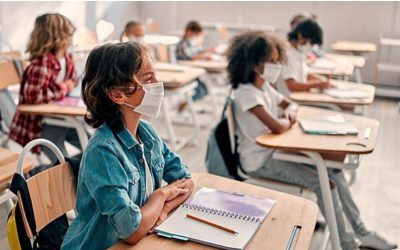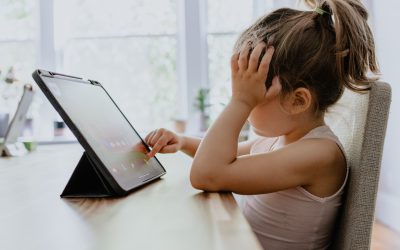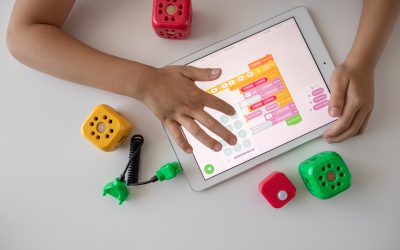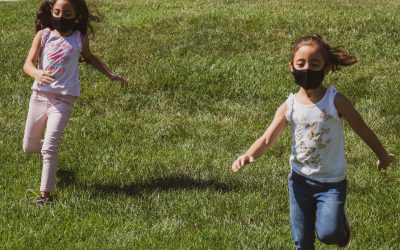Catch-up and support programmes in primary and secondary education
1 Mar 2021 | Catch-up programmes, Professionals
The Ministry of Education, Culture and Science (OCW) provides funding in three application rounds (tranches) to help repair learning loss resulting from the coronavirus crisis. Schools may decide for themselves which catch-up and support programmes are used and which pupils are eligible for the additional support. Research Institute LEARN! is working together with Maastricht University to investigate[1] which programmes are used to provide additional support to pupils and how effective the programmes are. In this blog, we present the initial analyses1 of funding requests from the second tranche, and specifically the types of programmes that schools have used (or will be using), their motivations for choosing the selected programmes and what they expect the effective elements will be.
Prof. Melanie Ehren,
Dr. Anne Fleur Kortekaas-Rijlaarsdam,
Rukiye Turkeli MSc
01.03.2021



Intended outcomes and target groups
The programmes focus mainly on three types of outcomes: 1) well-being/social-emotional development of pupils, 2) school performance (primary education: language and arithmetic; secondary education: core subjects) and 3) learning skills. Following the first period of school closures, schools established – for example, by using curriculum-related testing or as a result of classroom observations by the teacher – that this had caused learning loss or other problems. These were often visible prior to the school closure but increased further during the period of homeschooling. Schools report, for example, that pupils are anxious and have lost their self-confidence, and this is reflected in behavioural problems in the classroom that also hinder the learning process of individual pupils or of the entire class. Approximately one-third of the programmes focus on increasing the well-being and the social-emotional development of their pupils. The period of homeschooling has also made some schools realise that certain groups of pupils have difficulty regulating their own learning, for example by structuring the day and knowing when to work on which lessons and activities, but also how to learn vocabulary, for example, and what strategies they should use for this. Differences between pupils correlate with the help they receive from their parents (or the lack thereof). In particular, pupils with low-skilled parents received little support. By deploying programmes now to improve these skills, coupled with improving parental engagement, schools hope to increase cognitive performance by improving learning skills.
The time period (until the summer of 2021) during which the programme is to be offered will also ensure that leaving classes (group 8 and final examination year) are given priority in the programmes, since the school only has a limited time to support these groups of pupils, and it is also expected that other year groups will be able to catch up more easily if schools are simply reopened.
However, the first round of interviews with schools also shows that pupils who have just started in group 1 or the first year of secondary school are experiencing problems because they are starting at a new school and have had little opportunity to make friends and get to know teachers due to the second period of school closures.
In addition, specific problems arise, for example, with reading comprehension and arithmetic because it is difficult for a teacher to follow the pupils’ thought processes and how they approach their work when lessons take place online, and hence to correct any misconceptions.
However, the reality is that the recent second school closure has increased the pressure on schools and therefore also on the catch-up and support programmes. For some schools, the programmes offered a solution during the closure of the school this winter: pupils in special-needs care, in particular, were eligible for these programmes and were able to receive additional support in small groups. For other schools, sickness absence among teachers, the switch (once again) to online teaching and the already large differences between pupils caused so much pressure that programmes were temporarily put on hold. Schools also told us that they were allowing more pupils to participate in the programmes because more pupils are lagging behind than was the case in September (when the funding was requested).
Programme type[2]
Initials results show that the majority of funding requests in primary education were aimed at organising support in the school and during school hours, such as extending school time, remedial teaching and individual support during independent work time. In addition, they also purchased additional resources (26%), such as digital exercise software or hardware for pupils who do not have their own laptop at home. Nine percent of funding requests focused on increasing parental engagement, for example by talking to parents about what they need to help their children with homework, with an awareness of cultural differences. Or schools working with parents to create an individual learning plan for the pupil or investing in teaching resources (arithmetic games, books) specifically aimed at encouraging home learning with parents.
Secondary schools mainly used tutoring/extended school days (70%), followed by homework assistance (25%) and exam training (19%). In addition, secondary schools (in particular those offering vocation education & training) used interventions to help resolve issues relating to pupils’ practical placement delays. It is particularly striking that almost three-quarters of secondary schools organised programmes using both internal and external professionals, while more than half of primary schools relied mainly on their own staff. Within secondary education, pupils were assisted more often by unqualified staff compared to primary schools. External parties that schools work with included education advisory offices, homework institutes, municipal authorities and teacher training programmes.
Motivation for the selected programmes
The main motivation given for the selected programmes, as described by schools in the funding requests, is to flatten out differences within the class. Schools then said that they wanted to encourage the acquisition of learning skills, self-confidence and intrinsic motivation for school. These conditions are also considered to be essential prerequisites for learning, both individually and for a good classroom climate. Other motivations for selected programmes concerned the available capacity in the school and, for example, the possibility to expand the base of teaching or teaching assistant staff, but also good experiences with external partners such as homework institutes or external experts offering programmes to help with social-emotional development. Schools consider it important to work with existing partners who know the school and already have a trust-based relationship with pupils; the time is too short if that trust has to be established first. Some schools also made choices relating to the purchasing of resources or forms of professional development that had already been planned but for which the budget had been lacking; they tried to keep their approach closely aligned with their own vision and school plan.
An initial series of interviews with schools showed that the funding conditions also played a role in the choice of programmes. For example, programmes had to be offered outside the regular curriculum and had to be voluntary for pupils to participate in. However, schools noticed that the disadvantaged group sometimes also had motivational issues and dropped out more readily when support was offered outside school hours. For this reason, much of the support is offered where possible during school hours, for example in school time (especially in primary education) or immediately after school (particularly in secondary education). Part of this after-school offering takes place online, but usually takes place in the pupils’ own school.
Follow-up study
The next step in this evaluation study is to evaluate the effectiveness of the programmes and the rationale underlying them. To what extent will the various programmes help repair the learning and development losses that have occurred? What elements of the programmes are particularly effective? Based on our literature review on the effectiveness of catch-up and support programmes, we know that programmes with the following characteristics are particularly effective in improving learning performance:
- Qualified teachers providing intensive one-to-one tuition
- Geared to the regular school curriculum
- Teacher professional development: spillover effect for all pupils; effects have long-term benefits because the basic quality of the teaching improves. Cooperation with parents: effective for both young and older pupils
- Incentives to ensure participation: support during school time usually takes place in the classroom, i.e. in a familiar environment for pupils.
- Strengthening pupils’ social-emotional skills often leads to better school performance too
- Purchase of additional (physical) resources which pupils can use independently at their own level.
We map out which elements of the programmes are effective in improving motivation, well-being, social-emotional development, and linguistic and arithmetic skills. This knowledge, specifically relating to the current context in the Netherlands, provides essential help for schools in their efforts to support pupils as effectively as possible.
For more information, see: https://www.researchinstitutelearn.nl/en/home-english/
[1]Research team: Prof. Dr. Melanie Ehren, Dr. Martijn Meeter, Dr. Anne Fleur Kortekaas, Dr. Anne de Bruijn, Işıl Sincer (Vrije Universiteit, Amsterdam), Dr. Carla Haelermans and Madelon Jacobs (Maastricht University). https://www.researchinstitutelearn.nl/onderzoek/team/
[2]A total of 3,356 primary schools and 392 secondary schools submitted funding requests. Of these, we analysed 1,197 primary school funding requests and all requests from the secondary schools. Percentages are calculated as a percentage of this sample. Some schools have a programme running across multiple sites, which means that the percentage of funding requests does not correspond exactly to the percentage of schools.
See also information for:
Most recent blogs:
How LEARN! supports primary and secondary schools in mapping social-emotional functioning and well-being for the school scan of the National Education Program
Jun 28, 2021
Extra support, catch-up programmes, learning delays, these have now become common terms in...
Conference ‘Increasing educational opportunities in the wake of Covid-19’
Jun 21, 2021
Covid-19 has an enormous impact on education. This has led to an increased interest in how recent...
Educational opportunities in the wake of COVID-19: webinars now available on Youtube
Jun 17, 2021
On the 9th of June LEARN! and Educationlab organized an online conference about...
Homeschooling during the COVID-19 pandemic: Parental experiences, risk and resilience
Apr 1, 2021
Lockdown measures and school closures due to the COVID-19 pandemic meant that families with...
Home education with adaptive practice software: gains instead of losses?
Jan 26, 2021
As schools all over Europe remain shuttered for the second time this winter because of the Covid...
A COVID-generation: who are the winners and losers of a disrupted school year? Reflections from the Netherlands.
Dec 22, 2020
In this blog, Melanie Ehren, Martijn Meeter and Anne Fleur Kortekaas look at which students are...





